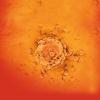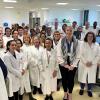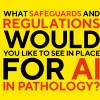The team at Leicester Royal Infirmary have collaborated on this article, which discusses their experiences of scientist reporting in histopathology.

Biomedical scientist reporting in histopathology started as a pilot in September 2012.
By 2017 some of the scientist trainees had completed the challenging course, passed their examinations set by the Royal College of Pathologists and completed stage D of the curriculum.
Leicester was one of the first pilot centres and Lisa Wheatley is now a valued reporting scientist member of the gastrointestinal (GI) pathology team.
The value of having scientists reporting histopathology specimens as part of the team is summarised by the team members:
Consultant Histopathologist
Professor Kevin West
“There has been a substantial expansion of the roles of non-medical healthcare professionals since I qualified in medicine nearly 40 years ago. When fibre-optic endoscopy was introduced it was the province of doctors. Now imagine a gastroenterology service without nurse endoscopists. It would have been unthinkable for nurses to perform procedures such as carpal tunnel surgery, but this is now widely accepted. So, why not histopathology?
“I was delighted when we became a pilot centre for biomedical scientist reporting. All our GI pathologists supported the initiative and have benefited from it. An experienced biomedical scientist brings a wide range of knowledge and skills to the job, which enhances the interaction between the laboratory and medical staff, without any significant impact on the training of medical staff. The overall volume of training was not substantially altered given that, for several years, consultants had to train six ST1s starting with us every August. We have 60,000 plus specimens, so there is enough work for everyone.
Please click here to read the full article.
Picture Credit | Science Photo Library




